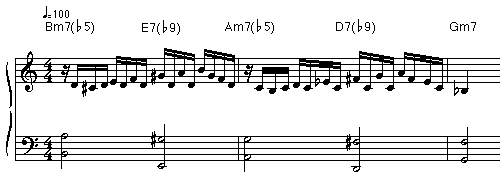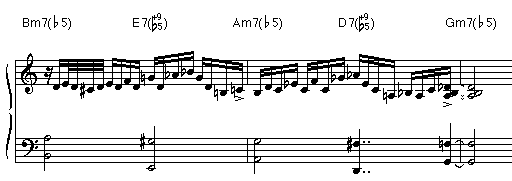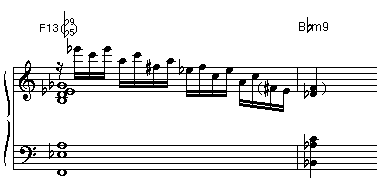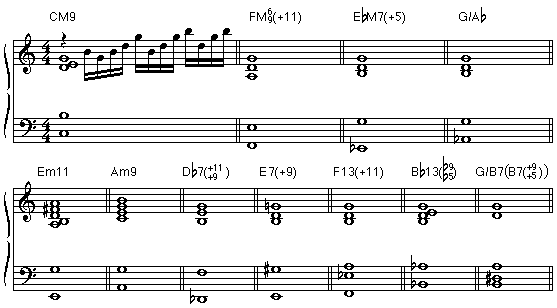Fill out your style with patterns from Mozart
Ted Rosenthal
Aspiring jazz pianists use many methods to learn their craft. The study of harmony and theory, chords and chord-scale relations for improvisation, listening, transcribing and analysis of solos are all common practice for the jazz pianist. One area often overlooked is the adaptation of passages from the classical piano repertoire to be used as part of the jazz pianist's vocabulary.
Pianists have a huge repertoire, an "encyclopedia" of music from which to draw to further enhance their jazz vocabulary and technique. Many jazz pianists began their musical education studying classical piano. Why let those years go to waste? With a good understanding of chord-scale relationships, and by applying creative alterations of rhythm and harmony, the classical repertoire contains a "goldmine" of material for the jazz pianist.
Areas for investigation include:
- Harmony: the music of the early 1900s (Debussy, Ravel, Scriabin) contains a wealth of interesting harmonies and voicings that the jazz pianist can add to his or her vocabulary.
- Use of pianistic resources: the classical repertoire contains many pianistic devices. Look at the Etudes of Chopin and Liszt. They include left hand patterns, two-handed figurations or patterns that cross between the hands, and octave and chord techniques.
- Figurations or passage work: the classical repertoire contains thousands of passages that the jazz pianist can incorporate. By excerpting a small pasage and making it a sequence, the jazz pianist can then alter some notes chromatically, alter the rhythmic emphasis, or change the underlying harmony to make a jazz phrase.
Creativity is the key! Keep trying different variations on a phrase. You will find passages that lend themselves to many different musical stuations: accompaniments, runs, arpeggios, voicings, and material for improvisation. When explored creatively, these devices will expand your approach to the instrument, inspire fresh ideas about color and sound, and build up your technique.
The following are excerpts from Mozart Piano Concertos. I will show you that by creatively manipulating these phrases, they can become part of your jazz language.
From the Mozart Concerto in C, K. 503, m. 204 of the first movement
Original underlying harmony

By changing the underlying harmonies and adding a connective tail, we can start to make a jazz phrase.

With a few chromatic alterations and rhythmic shifts, we can achieve a "jazzier" phrase.

From the Mozart Concerto in d, K. 466, m. 236
Original underlying harmony

By changing the underlying harmony, we get

From the Mozart Concerto in D, K. 437, m. 122 of the third movement
Original harmony

Try this run over

Further variation can be achieved by:
- chromatic alterations
- rhythmic variation
- connective material
- change in direction

© Ted Rosenthal 1996